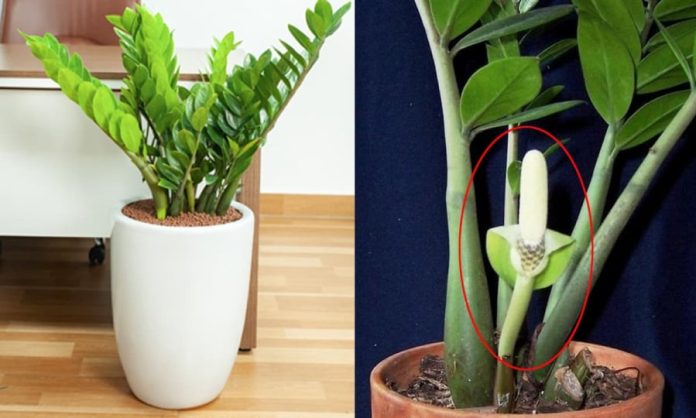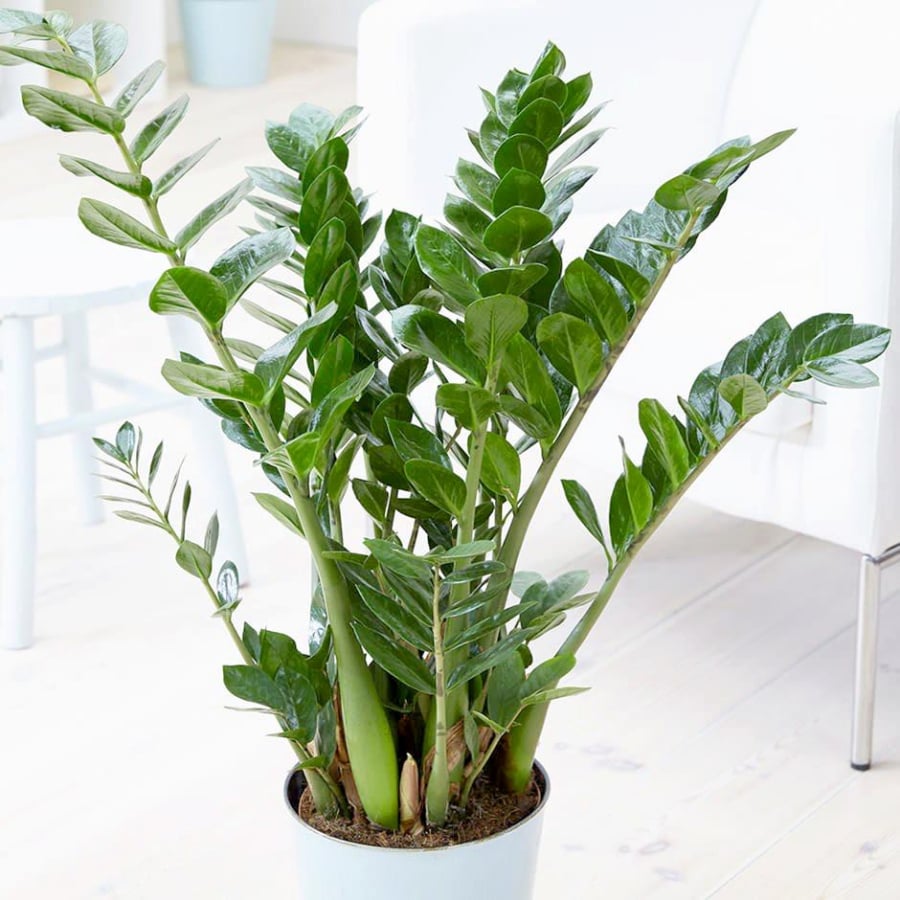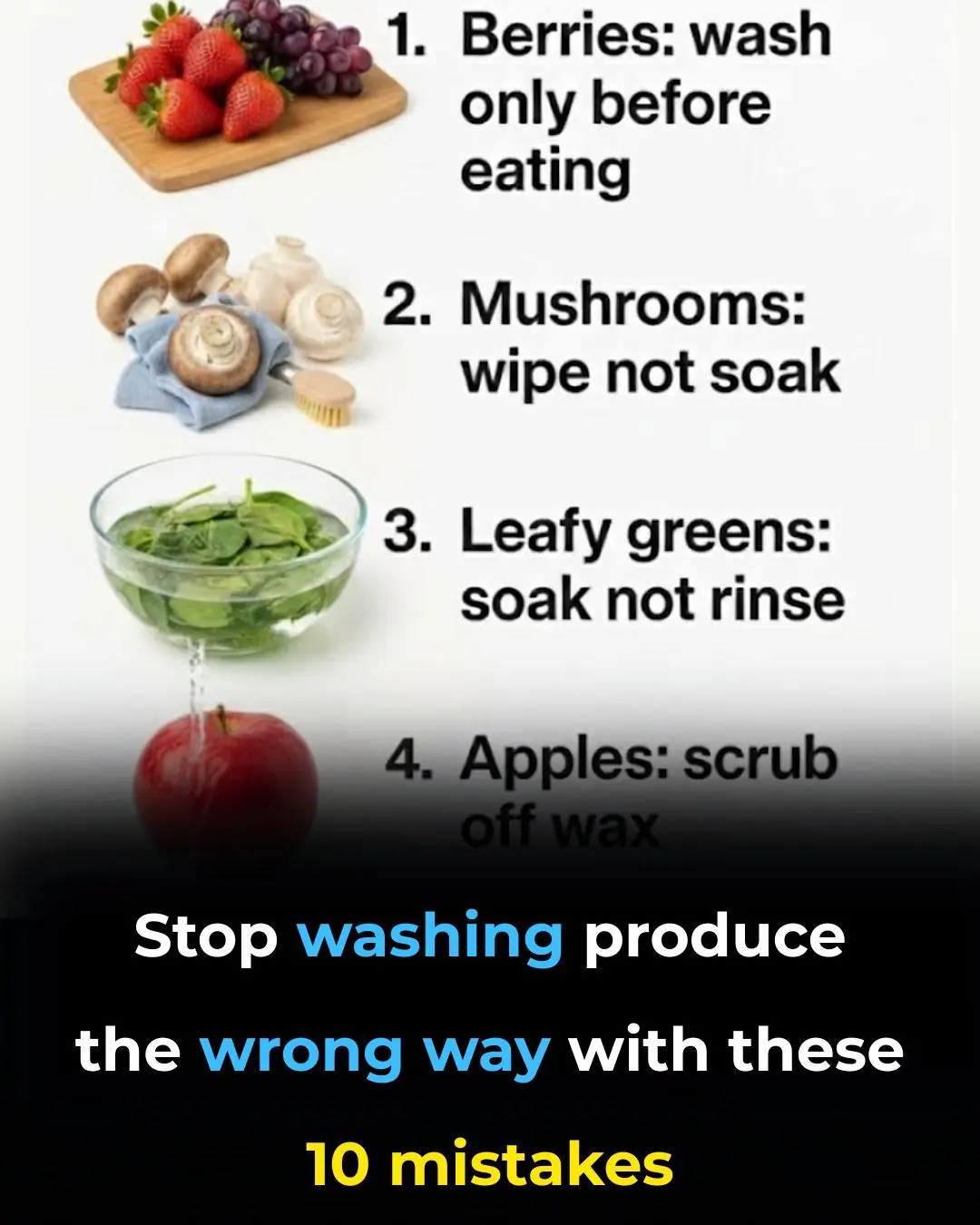
How to make the Money Tree flower and have fresh shoots to attract fortune

How to Make the ZZ Plant Bloom
Although the ZZ plant (Zamioculcas zamiifolia) is known for being easy to grow and low-maintenance, encouraging it to bloom is quite a challenge. So, how can you make your ZZ plant produce flowers?
Nowadays, the ZZ plant has become a popular choice for indoor decoration, not only because of its lush green appearance but also because it is believed to bring good fortune and positive energy according to Feng Shui. Many people believe that when a ZZ plant blooms, it symbolizes wealth, prosperity, and success in both career and health. However, flowering is a rare event, and not every ZZ plant will produce blooms—even under ideal conditions. Therefore, when a ZZ plant finally blossoms, it’s often seen as a good omen, signaling a period of growth, achievement, and abundance.
When and Why the ZZ Plant Blooms
Whether a ZZ plant blooms or not depends largely on how it is planted and cared for. Under the right conditions, the plant can produce flowers during the spring or autumn seasons—times when the temperature and humidity are balanced. These flowers are small, pale yellow or cream-colored, and usually appear at the base of the plant, often hidden among the leaves.
To encourage blooming, growers often use organic fertilizers or blooming stimulants during these seasons. However, patience is key—the ZZ plant usually only blooms after it has matured and developed multiple stems.
Ideal Soil and Growing Conditions
For a ZZ plant to thrive, the soil must be loose, well-drained, and nutrient-rich. Because its underground tubers are quite delicate, compacted soil can compress them and hinder growth. A good potting mix can include alluvial soil, coconut fiber, and crushed charcoal or perlite to enhance aeration and drainage. This combination ensures that the plant can breathe and absorb nutrients efficiently.
If you notice that your ZZ plant’s leaves are turning yellow or drooping, it could be a sign of poor drainage or overwatering—two of the most common causes of plant stress.
Fertilizing for Healthy Growth
The ZZ plant grows quite vigorously, so it needs regular fertilization, especially during spring and autumn. You can apply fertilizer every three weeks, and once the plant is established, continue feeding it about once every four weeks.
It’s best to use a balanced, slow-release fertilizer specifically designed for houseplants or ornamental foliage. Each time, sprinkle a small amount about 10–15 cm away from the plant’s base to avoid burning the roots. Over-fertilizing can cause root damage, so it’s better to feed lightly but frequently. After applying fertilizer, lightly water the soil to help nutrients soak in.
Proper Watering Technique
Because the ZZ plant has water-storing tubers, it is drought-tolerant and prefers dry, warm environments. Overwatering is one of the quickest ways to kill it, as it can lead to root rot.
The rule of thumb is: only water when the soil is completely dry. To check, insert a wooden chopstick into the soil—if it comes out dry, it’s time to water. If it’s still damp, wait a few more days. It’s better to underwater than to overwater this plant.
You can also mist the leaves lightly with a spray bottle to maintain humidity without soaking the soil. This helps the leaves stay glossy and prevents them from collecting dust. Occasionally, wipe the leaves with a soft damp cloth to remove dust and restore their natural shine.
Light, Temperature, and Humidity
Light is essential for all plants, including the ZZ plant. However, it does not tolerate direct sunlight well. Intense sunlight can scorch the leaves, causing them to curl or develop brown spots. When grown indoors, it’s best to place the plant in a bright, indirect light location—such as near a window, in the living room, or on a balcony with filtered light.
If the plant doesn’t receive enough light, it may grow slowly, turn yellow, or drop leaves. Moving it to a brighter spot often helps it recover within weeks.
The ideal temperature for the ZZ plant is between 25–27°C (77–81°F). When the temperature drops below 18°C (64°F), the plant may shed leaves and enter a dormant state. Below 5°C (41°F), it’s unlikely to survive. Fortunately, the ZZ plant adapts well to various humidity levels, but it prefers a moderately humid environment.
During hot summer months, when the air is dry, you can mist the plant occasionally to cool it down and keep the leaves hydrated. If any stems or leaves become rotten or wilted, remove them immediately to prevent the issue from spreading.
Final Thoughts
Encouraging a ZZ plant to bloom requires patience, consistent care, and the right growing environment. While its flowers are not particularly striking, their appearance carries symbolic meaning—representing luck, wealth, and success. With proper light, temperature, soil, and watering habits, your ZZ plant will stay vibrant and might one day reward you with its rare and beautiful blossoms.
So, take care of it lovingly, and when you finally see those small hidden flowers emerge, you’ll know that both your effort and your good fortune have begun to bloom. 🌸
News in the same category


Stop wasting freezer space on these 10 foods

Whoa, this completely flew under my radar

Stop cooking rice with these 10 mistakes

Stop washing produce the wrong way with these 10 mistakes

I didn't know

Stop cooking these 10 foods in aluminum foil

My nana taught me this hack to freshen carpets in 4 mins with 0 work. Here’s how it works

Tips for effective, safe and cost-saving pest control

Distinguish between clean bean sprouts and bean sprouts containing toxic chemicals with the following extremely simple tip.

How to make delicious beef stew at home extremely simple

Squeeze lemon into the rice cooker before cooking, a small tip that everyone will praise when they see the results.

Phone is full of memory, both frozen and slow, press this button to free up memory, the phone runs fast like new

Great tips with lemon seeds, simple planting method to have a pot of lemon that is both decorative and makes your house smell good

These ideas are brilliant

How to Wash and Condition Hair with Rice Water to Reduce Hair Loss and Boost New Hair Growth

How to Easily Unclog Stubborn Drains Without Calling a Plumber

Tips for Faster Hair Growth, Reduced Hair Loss, and Shiny Hair Using Beer Hair Wash

How to Keep Geckos, Mosquitoes, Cockroaches, and Rats Out of Your Home Naturally
News Post

Stop wasting money on these 10 pantry staples

Doctor reveals 5 powerful snacks that help your body fight cancer and disease

The Most Effective Foods to Cleanse your Lungs (Research Based)

Starve cancer cells: the ultimate guide to foods that fight and feed cancer

Stop wasting freezer space on these 10 foods

Whoa, this completely flew under my radar

Stop cooking rice with these 10 mistakes

#1 Best Way to Lower Blood Pressure Naturally and Fast

Stop washing produce the wrong way with these 10 mistakes

The Mystery Behind Open-Front Toilet Seats Finally Solved

🍋 Don’t Throw Away Lemon Seeds & Peels — Here’s How to Use Them Safely

I didn't know

Stop cooking these 10 foods in aluminum foil

My nana taught me this hack to freshen carpets in 4 mins with 0 work. Here’s how it works

Tips for effective, safe and cost-saving pest control

Distinguish between clean bean sprouts and bean sprouts containing toxic chemicals with the following extremely simple tip.

How to make delicious beef stew at home extremely simple

Squeeze lemon into the rice cooker before cooking, a small tip that everyone will praise when they see the results.
